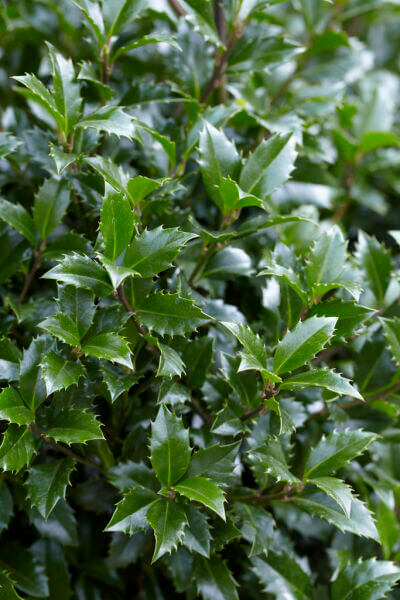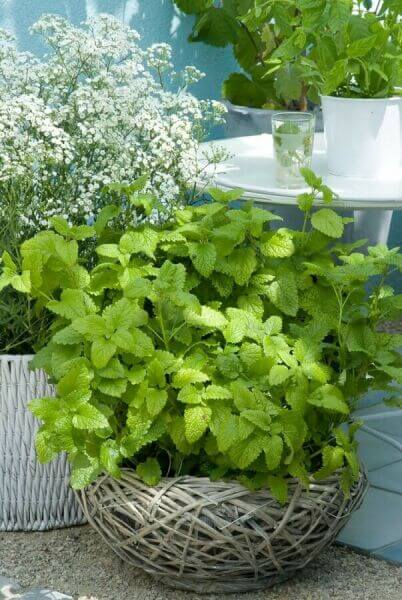Best Hedging Plants For Fast Growth
Best Hedging Plants For Fast Growth
Blog Article
Hardy Hedge Plants For Cold Climates
Improve your garden's attraction with lavish hedge varieties such as Yew (Taxus), Thuja, Laurel, Photinia, and Bamboo, celebrated for their structural stability and environmental advantages.
Yew and Thuja provide evergreen protection and winter strength, while Laurel provides quick development and broad, fragrant leaves.
Photinia adds seasonal beauty with its vibrant red foliage, and Bamboo provides a low-maintenance, serene atmosphere.
These hedges improve air quality, minimize noise, and create tranquil, private areas.
Correct planting, spacing, and maintenance guarantee energetic growth and environmental consistency.
Check out how these rich ranges can elevate your garden's charm and wellness.
Secret Takeaways
Change Your Garden With Lush Hedge Varieties
- Select Yew for its dense, evergreen development and unrivaled longevity.
- Opt for Laurel for its fast growth and broad leaves, guaranteeing fast personal privacy.
- Select Photinia for its lively seasonal foliage, which turns a striking dark red.
- Utilize Bamboo for a low-maintenance, winter-hardy hedge with visual appeal.
- Space plants 2-3 per meter and prune routinely for ideal development and health.
Popular Hedge Plants
When changing a garden with lush hedge varieties, it's necessary to consider popular hedge plants such as Yew, Thuja, Laurel, and Photinia due to their special characteristics and advantages.
Yew (Taxus) is highly esteemed for its longevity and dense, green development, making it a prime option for sustaining landscapes.
Thuja is kept in mind for its evergreen foliage and robust winter season strength.
Photinia includes seasonal vibrancy with red leaves that darken with time, creating dynamic visual appeal.
Laurel uses rapid growth and aromatic, broad leaves, perfect for fast privacy.
Additionally, Bamboo is an excellent choice for ambiance, providing a low-maintenance, winter-hardy choice that improves the garden's visual with its classy, swaying walking sticks.
These choices cater to a variety of horticultural needs and preferences.
Advantages of Garden Hedges
Garden hedges use a plethora of benefits, making them a valuable addition to any landscape. These natural barriers are cost-efficient to implement and supply considerable wind defense, improving air circulation and adding to noise reduction. The thick foliage of hedges like Thuja and Beech ensures personal privacy by obstructing presence, producing a secluded and peaceful environment.
Hedges also play an important role in microclimate guideline, providing a steady environment that cultivates plant growth and decreases temperature variations. Their intricate leaf structures filter contaminants, enhancing air quality and contributing to a much healthier garden ecosystem.
Furthermore, hedges stand out in noise decrease, soaking up and deflecting sound waves to lower ambient sound levels. This double performance of providing both acoustic and visual privacy improves the general serenity and visual appeal of any garden.
Planting and Upkeep Tips
For an effective hedge, careful preparation of the planting location is crucial. Make sure the soil has proper pH and drainage to support strong root advancement.
Area the plants appropriately for the selected species. Water the hedge regularly throughout its initial growth phase, adjusting as required with seasonal modifications.
Implement a methodical bug control and illness prevention method, using chemical or organic treatments when essential. Routinely check for aphids, termites, and fungal infections.
Apply mulch to maintain moisture and suppress weeds. Seasonal pruning promotes dense development and air blood circulation, important for plant health.
Following these guidelines will assist you cultivate a dynamic, properly maintained hedge that enhances the beauty of your garden.
Spacing and Trimming Guidelines
Spacing and Cutting Guidelines
Correct spacing and cutting are important for cultivating healthy, aesthetically appealing hedges. Appropriate spacing makes sure each plant gets enough nutrients, light, and airflow.
Follow these standards for optimum hedge upkeep:
- Spacing: Position hedge plants 2-3 plants per meter to encourage robust growth.
- Pruning Strategies: Routine pruning is necessary for preserving desired hedge height and shape. Trim brand-new development in summer and cut down older wood throughout winter season.
- Seasonal Care: Change cutting schedules and techniques according to seasonal requirements to ensure plant health.
- Hedge Height: Frequently monitor and cut to keep the wanted hedge height and achieve consistent aesthetics.
Adhering to these steps will ensure your hedge prospers, boosting both the appeal and performance of your garden.
Choosing the Right Hedge
Selecting the Right Hedge
Picking the proper hedge involves evaluating aspects such as mature height, foliage density, and environmental durability. Effective hedge plant selection needs understanding each species' growth characteristics and site-specific flexibility.
For example, Yew (Taxus) offers exceptional durability and dense development, while Thuja is noteworthy for its winter season resilience. In addition, thinking about upkeep requirements is crucial; fast-growing species like Laurel or Privet demand routine trimming, whereas low-maintenance options like Bamboo or Ivy might be more effective for those seeking minimal upkeep.
Environmental elements such as soil type, light schedule, and wetness conditions ought to also direct the selection process. This mindful approach ensures the selected hedges will flourish, supplying both practical and aesthetic benefits to the garden landscape.
Delivery and Planting Guidance
To ensure your hedge plants grow, they should be delivered by specialized couriers and planted promptly upon arrival.
Follow these vital actions for effective planting:
- Soil Preparation: Improve the soil with raw material to enhance drainage and nutrient content.
- Planting Depth: Produce a trench twice the width and equivalent to the depth of the root ball.
- Watering Strategies: Water thoroughly after planting, keeping the soil regularly wet however not saturated.
- Mulching: Use a layer of mulch to maintain wetness and suppress weeds.
Consumer Assistance and Service
Given the essential function of timely assistance in horticultural pursuits, our consumer support group is readily available six days a week through telephone, e-mail, and social media to offer expert advice and swiftly address any concerns. Their dedication to fast reaction times makes sure customer satisfaction by solving questions related to plant health, optimum planting techniques, and upkeep schedules.

Response Time
-------------------
This detailed support group, enhanced by a stellar 9.3/ 10 customer score, highlights our dedication to improving the gardening experience for every single customer.
Frequently Asked Questions
For How Long Does It Take for Hedge Plants to Establish?
Hedge plants normally need one to 3 years to end up being completely developed, with the precise period varying by species and growing conditions.
Effective care during this crucial period is important for robust growth. Consistent watering, watchful weed control, and suitable fertilizer application are critical in promoting strong root development.
For example, fast-growing species like Laurel might develop faster, while slower-growing ranges such as Yew might take longer. Diligent maintenance speeds up the facility process, resulting in healthy and dense hedges.
What Are the Best Hedge Plants for Privacy?
The question of the best hedge plants for privacy includes assessing evergreen and deciduous choices.
Evergreen hedges like Thuja, Laurel, and Cypress provide year-round protection, making sure continuous privacy.
On the other hand, deciduous hedges such as Beech provide seasonal privacy, shedding leaves in colder months.
Secret maintenance tips for personal privacy hedges include regular cutting, fertilizing in spring, and proper spacing-- normally 2 to 3 plants per meter.
Furthermore, consistent watering and thorough weed removal are vital for promoting healthy, thick growth.
Can Hedge Plants Bring In Wildlife to My Garden?
Yes, hedge plants can draw in wildlife to your garden by supplying vital benefits like shelter, food, and nesting websites, thereby boosting local biodiversity. For circumstances, yew, holly, and laurel are outstanding for bring in birds, while ivy supports a variety of pests.
Nevertheless, it is necessary to keep in mind that there are some disadvantages, such as increased upkeep to manage insects and routine upkeep. Thoroughly selecting and preserving hedge ranges can help balance these disadvantages and advantages, ultimately promoting a vibrant and sustainable environment in your garden.
Are There Any Flowering Hedge Plants Available?
Yes, there are flowering hedge plants readily available that can enhance the beauty of your garden.
For instance, Elaeagnus, likewise known as Olive Willow, produces fragrant white flowers in the fall, including a touch of sophistication.
Photinia, another popular option, showcases vibrant red leaves that develop into an abundant green, developing a dynamic visual effect throughout the seasons.
To guarantee these plants grow, it's vital to practice correct pruning strategies and seasonal maintenance, such as trimming new growth in the summertime and cutting down in the winter season.
These procedures will assist keep the health and aesthetic appeal of your flowering hedges.
How Do I Prevent Pests in My Hedge Plants?
To prevent pests in hedge plants, employ natural insect control techniques and preserve appropriate hedge care. Present helpful pests like ladybugs, which victimize damaging bugs, to develop a balanced community.
Frequently check your hedges for signs of problem and quickly remove any affected parts to prevent the spread. Ensure the health of your hedges by applying well balanced fertilizers and supplying appropriate water.
Make use of mulching to maintain soil wetness and appropriate spacing to decrease plant stress and promote robust growth. These practices collectively assist in minimizing pest issues and maintaining a healthy hedge.
Conclusion
In essence, choosing the ideal hedge varieties such as Yew, Thuja, and Additional hints Laurel can transform any garden into a tranquil sanctuary. These plants supply year-round plant, improve aesthetic appeal, and offer useful benefits like noise decrease and wind security.
Proper planting techniques, precise spacing, consistent watering, and seasonal cutting are crucial for ideal development.
Trusted shipment services and expert consumer support ensure a smooth experience from purchase to planting, making it simpler than ever to raise your outdoor area.
Garden hedges provide a multitude of advantages, making them a valuable addition to any landscape. These natural barriers are cost-efficient to implement and supply considerable wind defense, improving air blood circulation and contributing to noise decrease. The dense foliage of hedges like Thuja and Beech makes sure personal privacy by obstructing exposure, creating a remote and tranquil environment.

Pruning Strategies: Routine pruning is vital for preserving desired hedge height and shape. Cut brand-new growth in summer season and cut back older wood throughout winter.
Report this page